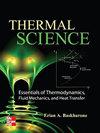Gas path diagnosis method for gas turbine fusing performance analysis models and extreme learning machine
IF 1.1
4区 工程技术
Q4 THERMODYNAMICS
引用次数: 0
Abstract
The gas path analysis, which can quantify the performance degradation of gas turbine components, has been extensively applied to the gas path diagnosis. However, the precondition of this method is that the number of measurable parameters for the gas turbine to be diagnosed should not be less than the number of its health factors. In the existing research, this precondition can be guaranteed through common approaches such as screening the degraded components by a model-based prediagnosis process or recognizing the degraded components by using tools such as an artificial neural network or a support vector machine. However, the diagnosis speed, recognition accuracy, and robustness of these approaches need to be improved. Therefore, a diagnosis method fusing the gas path performance analysis model and the extreme learning machine was proposed in this paper and applied to a GE LM2500+SAC gas turbine. The working mechanism of similarity ranking-gas path diagnosis-rationality check was introduced in the fusion method, endowing it with a higher recognition accuracy rate, stronger robustness, and higher diagnostic accuracy.燃气轮机熔断性能分析模型和极限学习机的气路诊断方法
气路分析可以量化燃气轮机部件的性能退化,在气路诊断中得到了广泛的应用。但该方法的前提是待诊断燃气轮机可测参数的个数不小于其健康因素的个数。在现有的研究中,可以通过基于模型的预诊断过程筛选退化组件或使用人工神经网络或支持向量机等工具识别退化组件等方法来保证这一前提条件。然而,这些方法的诊断速度、识别精度和鲁棒性都有待提高。为此,本文提出了一种融合气路性能分析模型和极限学习机的诊断方法,并将其应用于GE LM2500+SAC燃气轮机。在融合方法中引入相似度排序-气路诊断-合理性检查的工作机制,使其具有更高的识别准确率、更强的鲁棒性和更高的诊断准确率。
本文章由计算机程序翻译,如有差异,请以英文原文为准。
求助全文
约1分钟内获得全文
求助全文
来源期刊

Thermal Science
工程技术-热力学
CiteScore
2.70
自引率
29.40%
发文量
399
审稿时长
5 months
期刊介绍:
The main aims of Thermal Science
to publish papers giving results of the fundamental and applied research in different, but closely connected fields:
fluid mechanics (mainly turbulent flows), heat transfer, mass transfer, combustion and chemical processes
in single, and specifically in multi-phase and multi-component flows
in high-temperature chemically reacting flows
processes present in thermal engineering, energy generating or consuming equipment, process and chemical engineering equipment and devices, ecological engineering,
The important characteristic of the journal is the orientation to the fundamental results of the investigations of different physical and chemical processes, always jointly present in real conditions, and their mutual influence. To publish papers written by experts from different fields: mechanical engineering, chemical engineering, fluid dynamics, thermodynamics and related fields. To inform international scientific community about the recent, and most prominent fundamental results achieved in the South-East European region, and particularly in Serbia, and - vice versa - to inform the scientific community from South-East European Region about recent fundamental and applied scientific achievements in developed countries, serving as a basis for technology development. To achieve international standards of the published papers, by the engagement of experts from different countries in the International Advisory board.
 求助内容:
求助内容: 应助结果提醒方式:
应助结果提醒方式:


